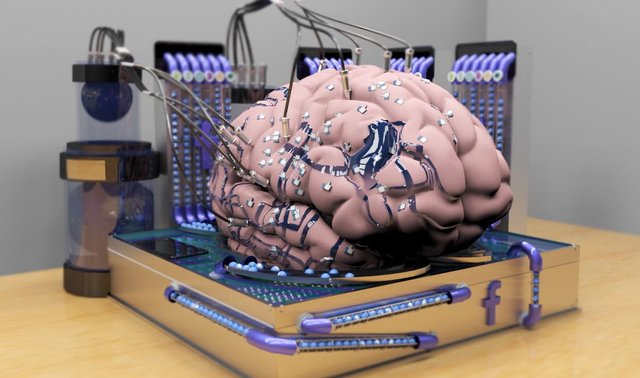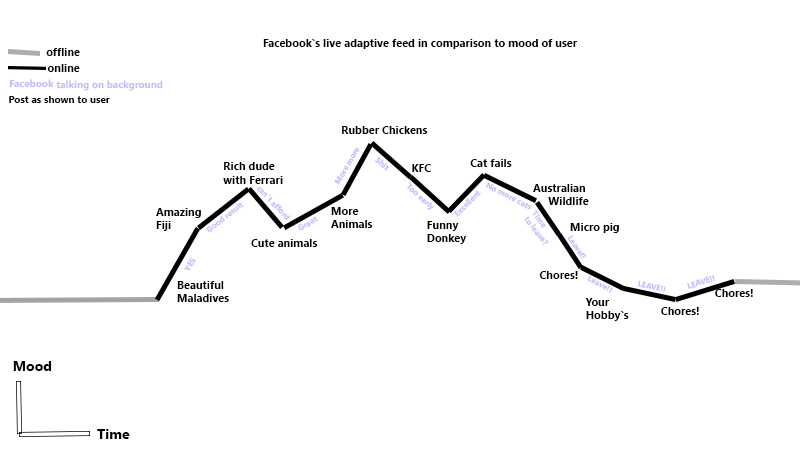Facebook is using real human brains as servers.
How does Facebook re-create your brain virtually?
We know Facebook is constantly learning from our interactions we have with the platform. Whether it is commenting, posting, liking or navigating, the Facebook algorithm is always hungry. The more interactions you have with the platform, the more they get to know you. It is quite logical that Facebook knows your interests based on the things you like (nytimes). In 2016 Facebook added new ways to express your likes by adding the five ‘Reaction Buttons’ (used to be six). The love, laugh, amazed, sad and angry emoji`s are now well adopted by the majority. These buttons are a rich source of data that can be used to enhance te user experience.

Below is a previous artwork of mine. This artwork expresses the way I look at the servers of Facebook in a creative manner.
At the back there are smartphones where little marbles are coming out. These marbles represent facebook-likes that the user assigned to a particulary post. They enter the server by post-category and then converted into small like-thumbs. These thumbs will be placed on the area of the brain where the 'post-mood' is likely to match the human brain mood. These thumbs represent the subject of the post, a full engagement profile of that post and the time when viewed. The black tubes are delivering the chemical structure of the brain which assigns a weight score to the like-thumbs variables.

Lately, I find myself wondering what kind of data they collect in terms of mood.
I could be that the algorithm knows when you're happy, stressed, or busy, based on the time you're online, total time, and the speed at which you go through your timeline. There will probably be a special database reserved for your account that has information about: “how do i deal with this persons different moods?”. I assume Facebook wants every user to have an excellent experience with the platform. So if they can brighten the mood of the user while the user is feeling a bit sad, the users brain will reward that with a little dopamine between the synapses. As soon as you leave the application this will probably decrease rapidly. That is quite similar to drugs spicing up the mood. And since we all know the saying: ‘what goes up, must come down’, it would not take too long for you to be back on Facebook.
When you open Facebook again, the timeline will probably start showing video's about wonderful places in the world you should visit one day. But since you can't go there at the moment, (which you obviously don`t like), Facebook lets the cute animals march in as an offensive to the decreasing mood’. This will happen as long as the user can hold it out. When these ‘algorithm cycles’ start to lose their effectiveness, you probably start receiving content about things you must do. Cooking, cleaning, ‘do-it-yourself crafts’ or things that represent your hobby's. This is the time Facebook is basically saying: “We would like to avoid that users have a bad experience, go do your chores and come back later.
